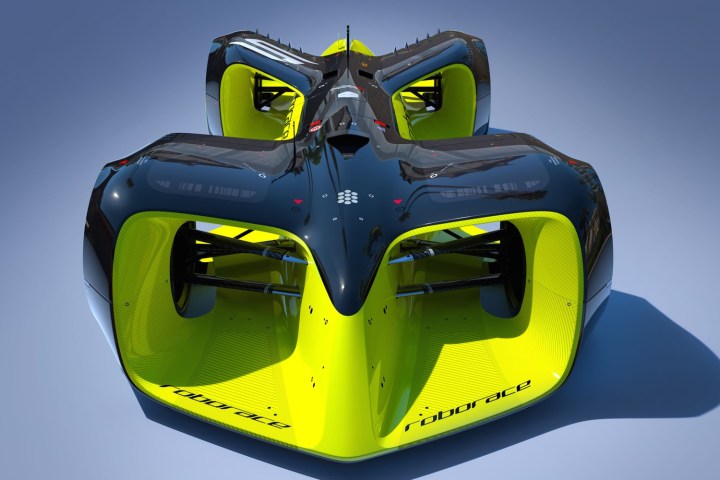
Pretty cool, it seems. Roborace called on Daniel Simon, the vehicle concept designer for Tron: Legacy, to create a concept robotic racer, and the result looks fairly good. With a sleek fuselage and wing-like fenders, it looks like it would be right at home in the computer world Simon helped design for the Tron sequel.
Roborace didn’t release any specifications for the car, but we’re pretty sure it will be all electric. The series is being organized under the Aegis of Formula E, which races electric cars exclusively, after all. Interestingly, there aren’t any adjustable aerodynamic features, giving teams one less variable to tweak for better performance, notes Autoblog.
Formula E wants to launch Roborace as a support series sometime during the next year or so. Races will be warmup acts to the main Formula E races, and will use the same temporary street circuits. Each race will last one hour, with 10 teams each entering two cars. All cars will be identical in order to level the playing field.
Exactly how the races will be run remains unclear. If the cars are truly autonomous, then they’ll simply be turned loose when the green flag drops, and even the teams will basically be spectators. Audi built a pair of autonomous RS 7 prototypes that can “learn” tracks and turn hot laps, so that kind of thing is possible.
On the other hand, Roborace’s website says the series will “bring together technology, gaming, and motorsport,” implying that there may be some form of remote driver control. We’ll find out whenever the first robotic grand prix is held.
Editors' Recommendations
- Waymo robotaxi attacked and set on fire in San Francisco
- Cruise woes prompt production halt of fully driverless van
- Dubai Police to deploy driverless patrol cars with AI smarts
- Cruise autonomous vehicle drives over woman just after she was hit by another car
- Cruise says it’s nearing approval for mass production of futuristic robotaxi

